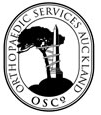Kneecap Surgery
Surgery on the kneecap (patellofemoral joint) is undertaken for either wear of the joint surfaces, or for dislocation/maltracking.
Patellofemoral joint wear may occur as consequence of genetic or structural disposition, including maltracking. Injury to the joint surfaces may arise as a consequence of fracture or direct impact injury.recurrent kneecap dislocation events may also result in joint surface degradation.
Arthroscopic smoothing ("debridement") of the patellofemoral joint surfaces may be effective in relieving symptoms, but is rarely curative and the results are unpredictable. It is best used in conjunction with a patellar realignment procedure, which also allows reliable determination of the status of the joint surfaces.
If the wear changes are limited to the outer (lateral) half of the kneecap undersurfaces, the treatment is to shift the angle of muscle pull by shifting the attachment of the tendon attaching the kneecap to the shin-bone (tibia) below. This involves lifting up a tongue of bone with the tendon attachment on it, shifting it to the inside (medially), and fixing it down solidly with screws. This is known as "patellar realignment" and is also an effective and simple option to treat kneecap dislocations.
The alternate option for treatment of recurrently dislocating kneecaps is to undertake a "medial patellofemoral ligament (MPFL)reconstruction". This is a more complicated procedure, involving more skin incisions and the harvest and placement of a hamstring tendon graft to reconstruct the damaged soft tissue restraints to dislocation.
Should the patellofemoral surfaces be very badly damaged, the further two options are between resurfacing the joint with artificial parts (plastic/metal) fixed to the bone with acrylic cement, or to remove the kneecap completely and reconstruct the defect with a soft tissue repair. This is appropriate in a younger person; an older person will be best served with a patellofemoral replacement. We use the Zimmer patellofemoral replacement for older patients.
